Altered paracrine signaling from the injured knee joint impairs postnatal long bone growth
- PMID: 28741471
- PMCID: PMC5526667
- DOI: 10.7554/eLife.27210
Altered paracrine signaling from the injured knee joint impairs postnatal long bone growth
Abstract
Regulation of organ growth is a poorly understood process. In the long bones, the growth plates (GPs) drive elongation by generating a scaffold progressively replaced by bone. Although studies have focused on intrinsic GP regulation, classic and recent experiments suggest that local signals also modulate GP function. We devised a genetic mouse model to study extrinsic long bone growth modulation, in which injury is specifically induced in the left hindlimb, such that the right hindlimb serves as an internal control. Remarkably, when only mesenchyme cells surrounding postnatal GPs were killed, left bone growth was nevertheless reduced. GP signaling was impaired by altered paracrine signals from the knee joint, including activation of the injury response and, in neonates, dampened IGF1 production. Importantly, only the combined prevention of both responses rescued neonatal growth. Thus, we identified signals from the knee joint that modulate bone growth and could underlie establishment of body proportions.
Keywords: connective tissue; developmental biology; extrinsic signaling; growth plate; inflammation; injury response; mouse; organ size; stem cells.
Conflict of interest statement
The authors declare that no competing interests exist.
Figures


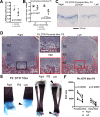

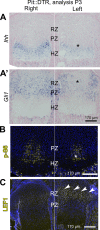
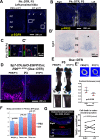
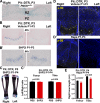
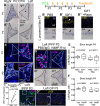
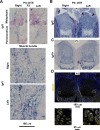




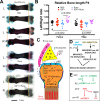




Similar articles
-
Regulation of Long Bone Growth in Vertebrates; It Is Time to Catch Up.Endocr Rev. 2015 Dec;36(6):646-80. doi: 10.1210/er.2015-1048. Epub 2015 Oct 20. Endocr Rev. 2015. PMID: 26485225 Free PMC article. Review.
-
Elevated serum levels of IGF-1 are sufficient to establish normal body size and skeletal properties even in the absence of tissue IGF-1.J Bone Miner Res. 2010 Jun;25(6):1257-66. doi: 10.1002/jbmr.20. J Bone Miner Res. 2010. PMID: 20200935 Free PMC article.
-
Roles of growth hormone and insulin-like growth factor 1 in mouse postnatal growth.Dev Biol. 2001 Jan 1;229(1):141-62. doi: 10.1006/dbio.2000.9975. Dev Biol. 2001. PMID: 11133160
-
Paracrine and autocrine signals promoting full chondrogenic differentiation of a mesoblastic cell line.J Bone Miner Res. 2004 Jan;19(1):100-10. doi: 10.1359/JBMR.0301206. J Bone Miner Res. 2004. PMID: 14753742
-
Integrating levels of bone growth control: From stem cells to body proportions.Wiley Interdiscip Rev Dev Biol. 2021 Jan;10(1):e384. doi: 10.1002/wdev.384. Epub 2020 May 20. Wiley Interdiscip Rev Dev Biol. 2021. PMID: 32436370 Review.
Cited by
-
Look who's TORking: mTOR-mediated integration of cell status and external signals during limb development and endochondral bone growth.Front Cell Dev Biol. 2023 Apr 19;11:1153473. doi: 10.3389/fcell.2023.1153473. eCollection 2023. Front Cell Dev Biol. 2023. PMID: 37152288 Free PMC article. Review.
-
Size control of the inner ear via hydraulic feedback.Elife. 2019 Oct 1;8:e39596. doi: 10.7554/eLife.39596. Elife. 2019. PMID: 31571582 Free PMC article.
-
CRISPR/Cas9-mediated knock-in strategy at the Rosa26 locus in cattle fetal fibroblasts.PLoS One. 2022 Nov 28;17(11):e0276811. doi: 10.1371/journal.pone.0276811. eCollection 2022. PLoS One. 2022. PMID: 36441701 Free PMC article.
-
A New Pipeline to Automatically Segment and Semi-Automatically Measure Bone Length on 3D Models Obtained by Computed Tomography.Front Cell Dev Biol. 2021 Aug 26;9:736574. doi: 10.3389/fcell.2021.736574. eCollection 2021. Front Cell Dev Biol. 2021. PMID: 34513850 Free PMC article.
-
A collection of genetic mouse lines and related tools for inducible and reversible intersectional mis-expression.Development. 2020 May 28;147(10):dev186650. doi: 10.1242/dev.186650. Development. 2020. PMID: 32366677 Free PMC article.
References
Publication types
MeSH terms
Substances
Grants and funding
LinkOut - more resources
Full Text Sources
Other Literature Sources
Medical
Molecular Biology Databases
Research Materials
Miscellaneous

